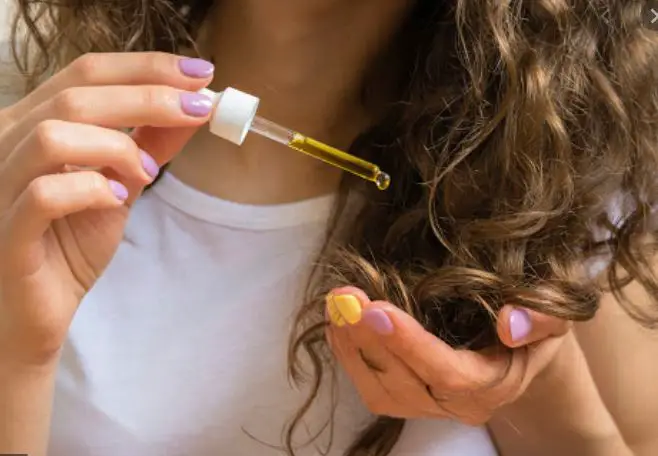The Truth about Oiling and Fading of Hair Color
Changing up your hair color can be a fun experiment. However, without the proper hair care, your newly colored hair could get damaged quickly. One common misconception is that applying oil to dyed hair will cause the color to fade. This is not true. In fact, oiling your colored hair will not affect the hue, but rather help maintain its vibrancy.
The Superior Oils for Dyed Hair
When it comes to oiling dyed hair, some oils are better than others. Coconut oil stands atop the list, offering a host of benefits. It not only aids in preserving the color but also nourishes your hair, providing essential proteins for an improved hair health.
Guide on Applying Oil to Colored Hair
Application of oil to your colored hair need not be challenging. First, heat the coconut oil until it is warm, but not hot. Apply the lukewarm oil evenly to the length of your hair and massage it gently into your scalp. Leave the oil in for at least an hour before rinsing it out with a color-safe shampoo. For the best results, do this at least once a week.
The Perks of Oiling Colored Hair
Oiling your colored hair not only helps to maintain the color, but it also has several other benefits. It moisturizes your hair, adds shine, promotes hair growth, and combats heat damage from styling tools. Oil, in particular, coconut, ensures your dye lasts longer by sealing in the color. Through proper care and efficient oiling techniques, you can enjoy vibrant and healthy hair for longer.
Navigating the flashy world of hair fashion, one cannot overlook the appeal of richly colored hair. Nonetheless, to keep that hair looking lively and healthy, top-notch care is a non-negotiable must.
- The Advantages and Guide to Applying Hair Oil Post Hair Coloring
- The Impact of Oil on Colored Hair: Removal and NourishmentThe main focus of this article is to understand the dual impact of oil on colored hair- its capacity to strip color and its benefits in nurturing dyed locks. It's integral to note here that not all oils have the same effect on colored hair. Some might instigate color fading while others can be positive contributors to the health and longevity of tinted hair. We'll dive into the specifics, helping you make informed choices about oil use with colored hair.
- The Right Way to Nourish Your Hair with Oil After DyeingColored hair needs special care, and one of the best ways to ensure its vibrancy and health is by using hair oil post-color treatment. Certain types of oil can help enhance the color, invigorate your tresses' health, and impart a lustrous sheen.However, many people hold incorrect beliefs about using oils on colored hair, fearing it might fade the color or lead to other hair damage. Let's debunk such myths and learn the correct application process of hair oil to color-treated hair for optimum results!For ease of understanding, we have put down the instructions into simple, easy-to-follow steps. It is our attempt to ensure the content is convenient, uncomplicated and user-friendly, making the process a seamless experience for you.
- Discovering The Best Oil for Dyed Hair: A Emphasis on the Advantages of Coconut Oil
- Unlocking the Benefits of Coconut Oil for Diverse Dyed Hair Shades
- Why Ignoring Hot Oil Treatment After Dying Your Hair Could Cost You Your Strands' Health?Hot oil treatment for dyed hair is often overlooked, but do you know ignoring it could jeopardize your hair's health? Thought-provoking, isn't it?This article delivers a comprehensive guide on applying hot oil treatment post hair dyeing, answering the looming query - "Can you do a hot oil treatment after dying your hair?". Spoiler alert - you can! But, there's a caveat. Let's dive deeper!Note, oil-ing your hair straight after dyeing could lead to the color leaking. Waiting for at least 72 hours is typically recommended. To enhance your tresses’ color vibrancy and longevity, hot oil treatment can prove beneficial, if carried out correctly. Now, the question arises, how to do it? Stay with us to walk through the simple and efficient steps.Let's culminate with a real-world example. Jane, a fashion enthusiast, recently dyed her hair. She incorporated the hot oil treatment into her hair care routine after a week of dyeing. The results stole everyone's attention. Her hair not only retained its color but displayed an enhanced shine and bounce. Her experience manifests the significant benefits of hot oil treatment after hair coloring.In conclusion, not only can you apply hot oil to your Colored strands, but it's also highly beneficial for your hair health. Vibrant color, enhanced shine, and no more brittle strands – are you ready to give it a try?
Can You Use Hair Oil After Dyeing Your Hair?
Ever wondered if oil will intensify the fading of your colored hair? Get ready to be startled because the answer in just one word: 'NO'! 'Moisturizing' in actuality, is the magic word for taking care of colored hair. This not only sets the premise for an engaging discussion in this article but also dispels a popular myth. We promise an exciting journey as we delve into the details on this topic.
While most hair dyes contain harsh ingredients like ammonia and peroxide that can strip away natural hair color and weaken the strands, leading to dry, brittle hair, an understanding of how to mitigate these effects can make all the difference. Particularly, the integration of certain oils in your hair care routine can significantly safeguard your hair from this damage.
An impressive example is coconut oil. Despite some oils potentially reducing the vibrancy of your color over time, coconut oil can offer superior qualities for colored hair. It can help seal in the color, adds shine, and is efficient at reducing protein loss. Thus, it enhances the overall health and resilience of your hair. Simply distribute the oil from roots to ends and let it sit for a few hours before rinsing and applying conditioner.
Achieving benefits such as color longevity and revitalized texture can be easy with coconut oil treatment. Moreover, combining this with the process of rinsing out dye properly, you can experiment with hair colors carefreely. Also, considering hot oil treatments further acts as an effective preventive measure against potential damage. It is all about correctly nourishing and caring for your color-treated hair so it can remain vibrant and healthy, despite the use of dyes.
Professional hair care advice often includes the use of hair oil for colored hair. This is because hair oil not only provides the much-needed hydration to your hair, but it also strengthens it, resulting in plush and vibrant hair that's healthy and far from looking sere or straw-like. Staying hydrated also ensures your hair doesn't suffer from dryness. More importantly, a routine oil massage, once or twice a week, can aid in preserving your hair color for a longer period. It's recommended to spread the oil from your roots to the ends and leave it on for a couple of hours to receive the full benefits.The oil of choice could be coconut oil, since it is known to reduce protein loss and provides your hair with the optimum protection it requires. As part of your hair care regimen, choosing semi-permanent hair colors can also be beneficial. Even though these colors might not last as long as permanent ones, they inflict less damage on your hair.On the downside, forgoing oil in your hair care may result in dryness and your color could start fading, thereby reducing the lifespan of your hair color. As such, the benefits of oiling, starting from a healthy and vibrant appearance to a longer-lasting color, softened hair, and minimizing the harmful effects of the dyes, are worth considering.
Does Oil Remove Hair Color?
Contrary to popular belief, not all types of oils cause fading of hair color. In fact, certain oils, like coconut oil, can actually enhance the vibrancy of colored hair by locking in the color and increasing its shine and smoothness. However, it's worth noting that hot oil treatments using oils such as olive oil might actually leach color from your hair over time. Therefore, it's essential to understand which oil and application technique best fits your hair's needs.
If you're looking to protect your colored tresses against damage, oil treatment is an effective solution. But why? The molecular construction of oil allows it to seep deep within your hair shafts, hence, fortifying your hair internally while enhancing external radiance. Particularly, oils like coconut oil work wonders for dyed hair, thanks to their integral properties.
Wondering about the frequency of application? Oiling your hair once or twice a week suffices to keep it hydrated and glossy. The timing is important too, although we haven't gone into the specifics, whether you should oil your hair immediately post hair-color or wait a while.
Get ready to bid farewell to dull, damaged hair color. Say hello to vibrant, healthy tresses that gleam with life with regular oil treatments. Remember, the state of your hair is a reflection of the care you take. Oil treatment for colored hair is more than a routine, it's a celebration of your beauty.
There has been a noticeable trend of hair dye fading following oil applications, leaving many consumers frustrated. The culprit behind this dilemma is often tied to the kind of oil used and the way it’s been applied. This article will delve deeper into this issue and highlight some practical solutions.
First and foremost, not all oils are created equal when it comes to colored hair. If you desire optimal color preservation, coconut oil comes highly recommended. It's known to maintain a luscious and healthy look of the hair, provide a silky and smooth feel, and minimize the damaging effects of hair dye products.
The way you apply the oil can also make a world of difference. After you've thoroughly rinsed out leftover dye, you want to gently detangle your wet hair to prevent breakage. Afterwards, evenly distribute your chosen oil (ideally coconut oil) from your roots all the way to the tips of your hair.
By following these simple yet impactful advice, you can enjoy your hair color for a longer period. Not only will you tackle the annoying issue of color fading but also provide your hair with the essential nutrients it needs to remain healthy and vibrant.
Did you know that a hot oil treatment could impact your hair color? Yes indeed! These treatments sneakily assist in the gentle removal of your hair dye. To understand how, envision those hot oil components invading each hair strand, filling up the vacant spots left behind by the dye.
Let's dive into the world of olive oil - a common kitchen item that also doubles as a hair dye remover. Don't be alarmed! This sneaky trick only comes into play if you apply it excessively. When used moderately and mixed correctly with other elements, olive oil can work wonders and provide numerous positive effects. So, it all unravels down to how and when you utilize it.
Talking about oils, it's exciting to note how different oils can result in varying impacts on your colored mane. For instance, coconut oil, as stated in the summary, is known for its beneficial effects. But be careful! This does not imply that every oil is a good fit for your dyed hair. It's essential to choose wisely and understand the properties, benefits, and potential side effects.
The eloquence of words plays a crucial role. To put it plainly, imagine olive oil as a secret ingredient that seeps deep into your hair strands, serving a dual purpose – nurturing your hair and lurking around to lift off any dye if used excessively. It might sound intimidating, but it's crucial to know both the advantages and drawbacks.
Before you start reconsidering hot oil treatments or olive oil for your dyed hair, remember that not all hair types will respond in the same way. These elements might not suit everyone due to their propensity to fade hair color over time. Knowing your hair and understanding what works for you is crucial.
On the bright side, olive oil does come with its share of benefits making it a popular choice. Lastly, always keep in mind the mention in the summary - the usage of oil on wet hair post-rinsing to reap maximized benefits.
Always remember, the key is to deliver complete, correct, and compelling content that fits like a puzzle piece with the entire write-up.
How to Apply Hair Oil after Coloring?
Keeping your hair oiled after undergoing a color treatment is pivotal to preserving its health and vitality. It's advisable to oil your tresses a day before your intended shampooing. Also, after having your hair dyed, let it rest for a minimum of 2 days so that the color has ample time to properly set in. Now, let's dive into the details on how to correctly apply hair oil to your newly colored locks.
The process of oiling serves to nourish and hydrate your hair cuticles post-coloring. Treatments often strip away natural moisture and over time cause your dyed hair to look dull and dry. But fret not, the habitual use of hair oil can work wonders and restore your hair to its original shine.
Now, what oil should you use? Certain oils indeed work better for color-treated hair, enhancing both its health and color longevity. The champions in this regard are unquestionably coconut and olive oils. Renowned for their natural hydrating properties, they consistently provide your strands with much-needed nourishment.
However, it's essential to remember not to oil your hair before color treatment as it may hinder the dying process. Also, be cautious of using any oil that may potentially fade your vibrant color. Ultimately, knowing when to and not to oil can significantly impact how your colored hair maintains its luster and vitality.
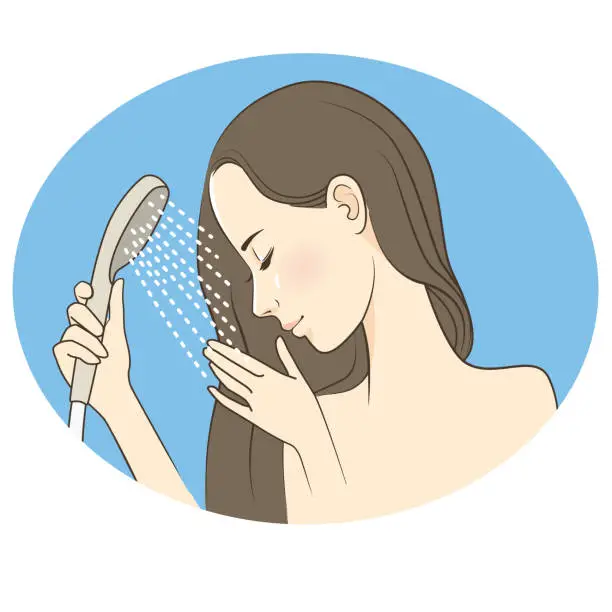
Commencing Step: Promptly wash away all remnants of dye from your tresses and scalp. The importance of this initial step in the overall hair care process cannot be overemphasized. Failing to completely rinse off all the dye residue might lead to undesirable effects such as unexpected color alterations, scalp irritation, or a dry, damaged look as the remaining dye may continue to process. Hence, ensure you spend adequate time rinsing, making use of warm water and gentle hair care products where necessary. This not only creates a clean foundation for the next steps in the process but also prepares your hair optimally for the application of hair nourishing oils, which form the mainstay of this guide. By effectively rinsing, you set your hair on the right path towards the picture-perfect look you desire.

Step 2: Begin the process of untangling your damp hair using a optimal tool such as a wide-toothed comb. Particularly, a wooden one can be useful as it aids in avoiding static and preventing hair damage. It's beneficial to start detangling from the tips of your hair, gradually moving up towards the roots. Make the procedure much easier and gentler on your tresses by employing the use of a conditioning spray. If you encounter extreme tangling or knots, additional steps might be needed, ensuring careful handling to avoid hair breakage.
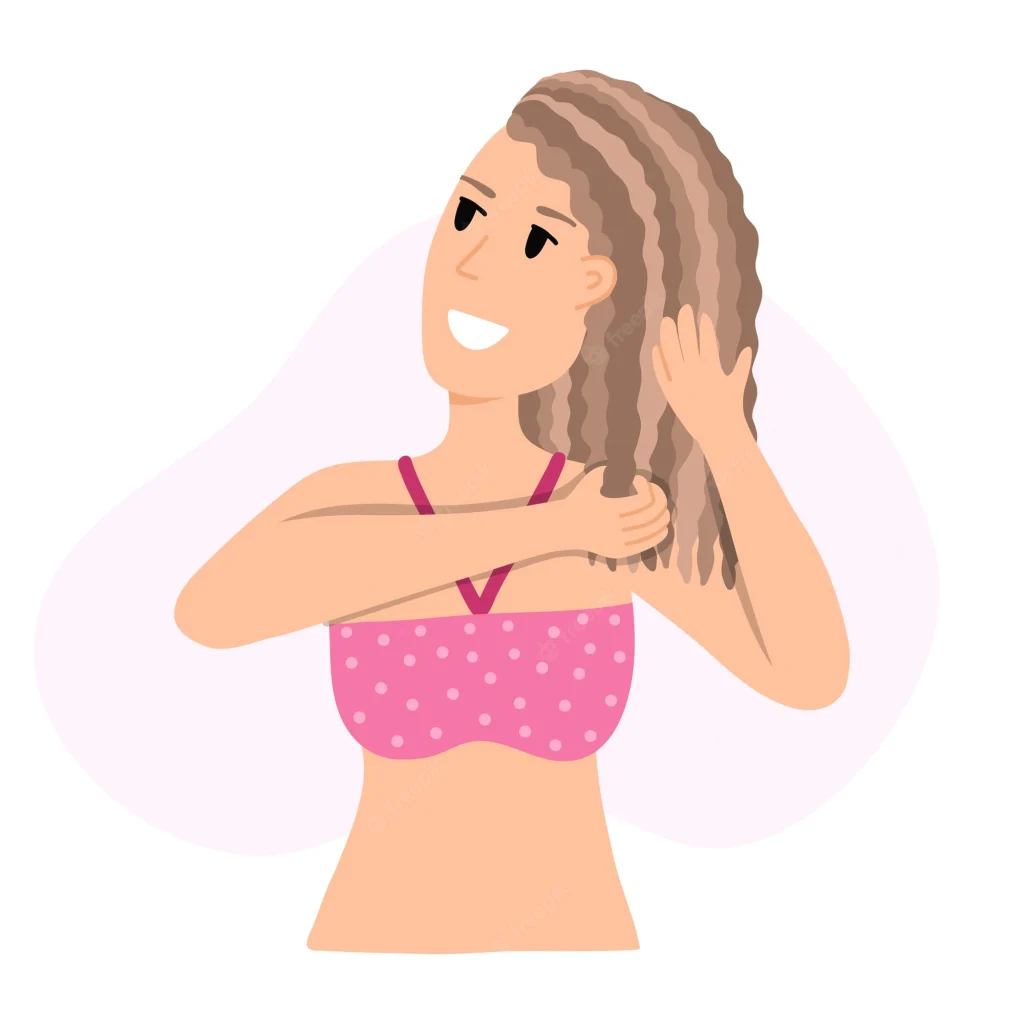
Step 3: Firstly, aim for a tablespoon – or what you gauge to be a generous amount – of coconut oil into your hands. Be mindful of the oil quantity according to your hair length and volume. Next, use your fingers to gently spread the oil over every part of your scalp and ensure it runs through every strand of your hair to achieve an even coat. Try to employ circular massaging techniques on your scalp and consider using a comb to further distribute the oil across your hair. Remember, this process is key in promoting a healthier hair appearance and minimizing the negative impact of applied hair dyes, all thanks to the natural richness of coconut oil.
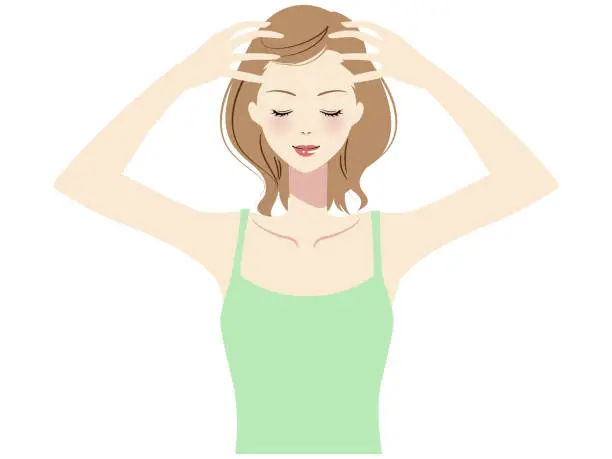
Essential Application Technique: It is crucial for the health of your hair that you thoroughly apply the chosen oil, such as coconut oil, from your scalp down to every individual hair strand, paying special attention to the tips. Coconut oil is particularly beneficial for dyed hair due to its unique properties. Neatly diffusing the oil assists in reducing protein loss, fostering stronger and healthier hair overall.
To achieve the best results, remember to apply the oil uniformly. Pay careful attention not to skip out on the rear part of your head too, it is easily forgotten but equally significant. The concept of applying oil from the roots of your hair to the extreme ends serves not just a hair maintenance purpose, but also retains your hair's natural sheen and ensures the longevity of its color. Understanding and practicing this method proves beneficial for hair vitality and overall maintenance.
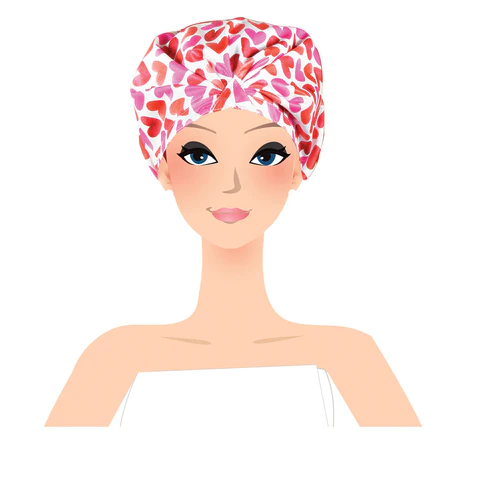
Step 5: Put on a shower cap and let it sit for 2-3 hours. The oil on your hair requires this amount of time to properly penetrate your hair strands. During this period, the oil has an opportunity to deeply moisturize and strengthen your hair, while also locking in the color for a better shine and smoothness. Following the advised wait time, rinse your hair and apply conditioner for added nourishment. This extended oiling period plays a crucial role in after-color hair care. It not only enhances the benefits of the oil application but also helps your reader understand the recommended 2-3 hour time frame. This point underscores the central theme of this article— the significance of proper hair care following coloring and how oil application assists in achieving this.

Step 6: It's time to wash your hair. For the best results, opt for a color-safe or sulfate-free shampoo, as these kinds are less harsh and won't strip natural oils or fade your color. Finally, rinse with cool or lukewarm water. Try to avoid hot water as the heat could damage the hair cuticle, causing your color to fade faster.
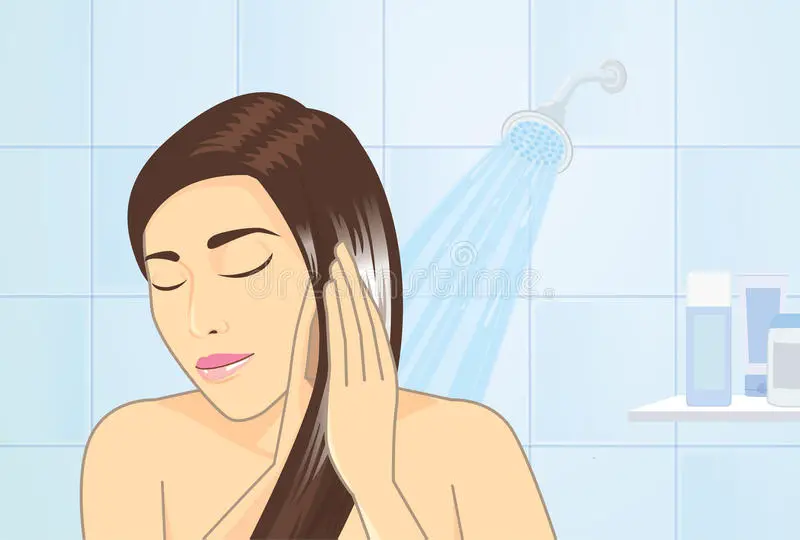
Step 7: For optimum care, apply a conditioner specifically designed for colored hair. This will not only seal in the moisture, ensuring that your hair stays hydrated, but also prevent color fade and add a glossy shine. After rinsing the hair oil you've previously applied, begin to distribute the conditioner, focusing on the mid-lengths through to the ends of your strands. Let the conditioner soak in for a few minutes to absorb the beneficial ingredients. Finish by rinsing thoroughly with lukewarm water. Remember, using a conditioner geared towards colored hair boosts the benefits derived from the application of hair oil, working cohesively to enhance color vibrancy and maintain softness.
Which Oil is best for Colored Hair?
There's an array of oils, including argan, almond, and castor oil, utilized predominantly to provide an intensive conditioning your colored hair craves for. Yet, standing out among these is the much-admired coconut oil. It's definitely helpful to dive into details and explore why coconut oil is awarded this top spot.Compared to its counterparts, coconut oil wins due to its special properties benefiting colored hair. But a deeper understanding requires knowing individual features of each oil. Each holds specific benefits that can enhance the health and appearance of your dyed hair. Also, there's considerable value in discussing a habitual oil application process and the ideal intervals for such treatments to yield optimum results for your haircare routine.Hot oil treatments are particularly beneficial for colored hair, and they deserve special attention. The steps to perform these treatments should be detailed for a reader's convenience.Last but not least, the process of how oils can aid in maintaining a healthy hair look extending the life of color, and achieving soft and smooth hair should be included. The focus should also cover on how oils can mitigate the adverse effects of hair dyes. Utilizing these oils for your colored hair health is essential, and we aim to provide you the necessary guidance on this.
If you have colored hair, coconut oil may soon become your new best friend. Why, you ask? First off, coconut oil is packed with lauric acid, which steps in to minimize protein loss when it's applied to your hair before or after washing. This is key for preserving the strength and structure of hair that's been through the chemical process of coloring. Next up, the low molecular weight of coconut oil allows it to slip easily inside the hair shaft. Thanks to this, you'll enjoy enhanced protection and hydration - two must-haves for keeping colored hair looking beautiful and vibrant. All these unique characteristics place coconut oil a cut above other oils for meeting the specific needs of colored hair.
Uncover the astonishing transformation of dyed hair when treated with coconut oil and see the incredible improvements in glossiness, durability, and the lasting power of the color afterwards.

What are the Benefits of Applying Coconut Oil on Dyed Hair?
Coconut oil offers numerous benefits for colored hair, and this information is vital for maintaining vibrant and healthy hair. An in-depth understanding illustrates why coconut oil is a must-have for color-treated hair. This miraculous natural product, straight from the heart of Mother Nature, aids in reducing protein loss, which is often a common problem with color-treated hair. Providing clear examples or anecdotes of individuals who have brilliantly transformed their hair health by pledging to use coconut oil can allow a better, more enlightening perception of the topic.
Let's dive a little into the process of applying coconut oil to your hair. Understanding its impact on color longevity and its role in sustaining the overall health of your locks can produce more tangible advantages for the readers. Choosing between hair oils is a substantial decision; using alternative oils instead of coconut oil can wreak havoc on hair health. Elucidating this point will warn readers about these potential damages.
Color-treated hair requires a lot of love and pre-color hot oil treatments are beneficial for the health and vibrancy of your hair color. Taunting the concept of moisture retention and preventing dryness through these treatments is a step ahead in ensuring supreme hair health. This holistic approach towards the topic can offer readers a 360-degree insight, paving the way for a deeper and more comprehensive understanding of the subject.
a) Exemplifying the key advantages of diligent aftercare once you've colored your hair, you'll experience a variance in its texture. Your hair retains its luminous, healthy glow several days post the coloring treatment. It's the magic of adhering to a moisturizing routine and protecting your locks from damage, especially through the habitual usage of recommended natural oils like coconut oil. This not only enhances the color vibrance but directly addresses the typical question revolving around the effects of oil treatment on colored hair.
b) The duration of your hair color can be extended significantly
The phrase "The duration of your hair color can be extended significantly" may seem a bit ambiguous. To offer more clarity and value to our readers, let's delve deeper into the subject. Instead of just declaring that your hair color will last longer, let's discuss how this is possible and why it works. For example, the content could be expanded to:
"b) The duration of your hair color can be extended significantly with proper hair care practices. Regular oil treatments, especially with one as nutritious as coconut oil, ensure the color of your hair stays vibrant for longer durations. These oil-based hair rituals moisturize, seal the color, and enhance the shine of your hair, thereby making sure your hair color stays resplendent for extended periods. Understanding this not only substantiates the title but also provides a comprehensive look into how the recommended hair care regimen enhances the lifespan of hair color."
c) By regularly massaging coconut oil into your colored hair, you can deliver deep hydration and nourishment. This results in hair that is not just soft and smooth, but also retains its vibrant color for an extended period.
For a hassle-free experience and better hair care, comb your oil enriched, colored hair. It ensures even oil distribution, minimizing the risk of damage, and helping maintain the vibrancy of your hair color.
e) Mitigates the damage caused by chemical hair dyes
The chemicals found in hair dyes can cause a range of issues such as hair breakage, scalp irritation, and even prompt allergic reactions. Enriching the hair coloring process with coconut oil can help to protect against these, acting as a shield against the damage chemical hair dyes can cause.
Can You Do A Hot Oil Treatment After Dying Your Hair?
Color-treated hair often requires additional care to maintain moisture and promote luminosity. An effective strategy to ensure enhanced hydration and prevention of dryness involves integrating hot oil treatment into your haircare regimen, preferably a week prior to your color service. This process involves heating oil and gently massaging it into your scalp, which can promote overall scalp health, better hair conditioning, and optimal preparation for hair color treatment. Different oil types can have varying impacts on color-treated hair. Let's delve deeper into the specifics of various oils and their suitability. For instance, coconut oil is a stellar option for color-treated hair, as it can provide superior protection and minimize protein loss, making it an ideal choice. Contrary to popular misconception, oil treatments do not fade hair color. Rather, they serve to further condition, moisturize, and fortify the hair. Once the dye is rinsed out, and the hair is wet and detangled, the oil should be distributed from the roots to the ends. Leaving the oil in your hair for 2-3 hours before rinsing and conditioning can yield the best results. Knowing how to properly care for and maintain color-treated hair can significantly enhance hair health and longevity. Utilizing hot oil treatments, particularly with beneficial oils like coconut oil, can help achieve this, ensuring that your hair remains not only vibrant but also nourished and strong.


